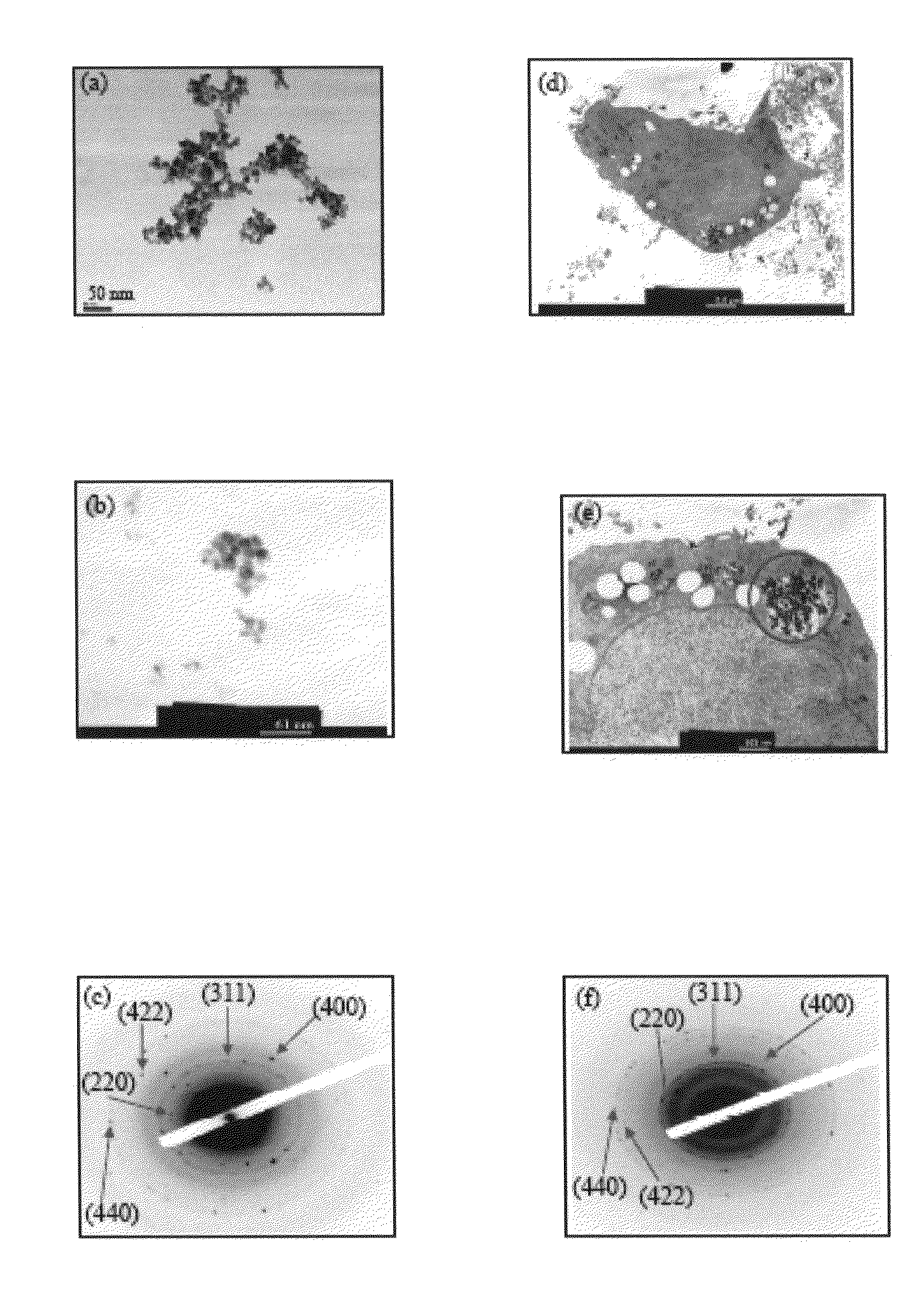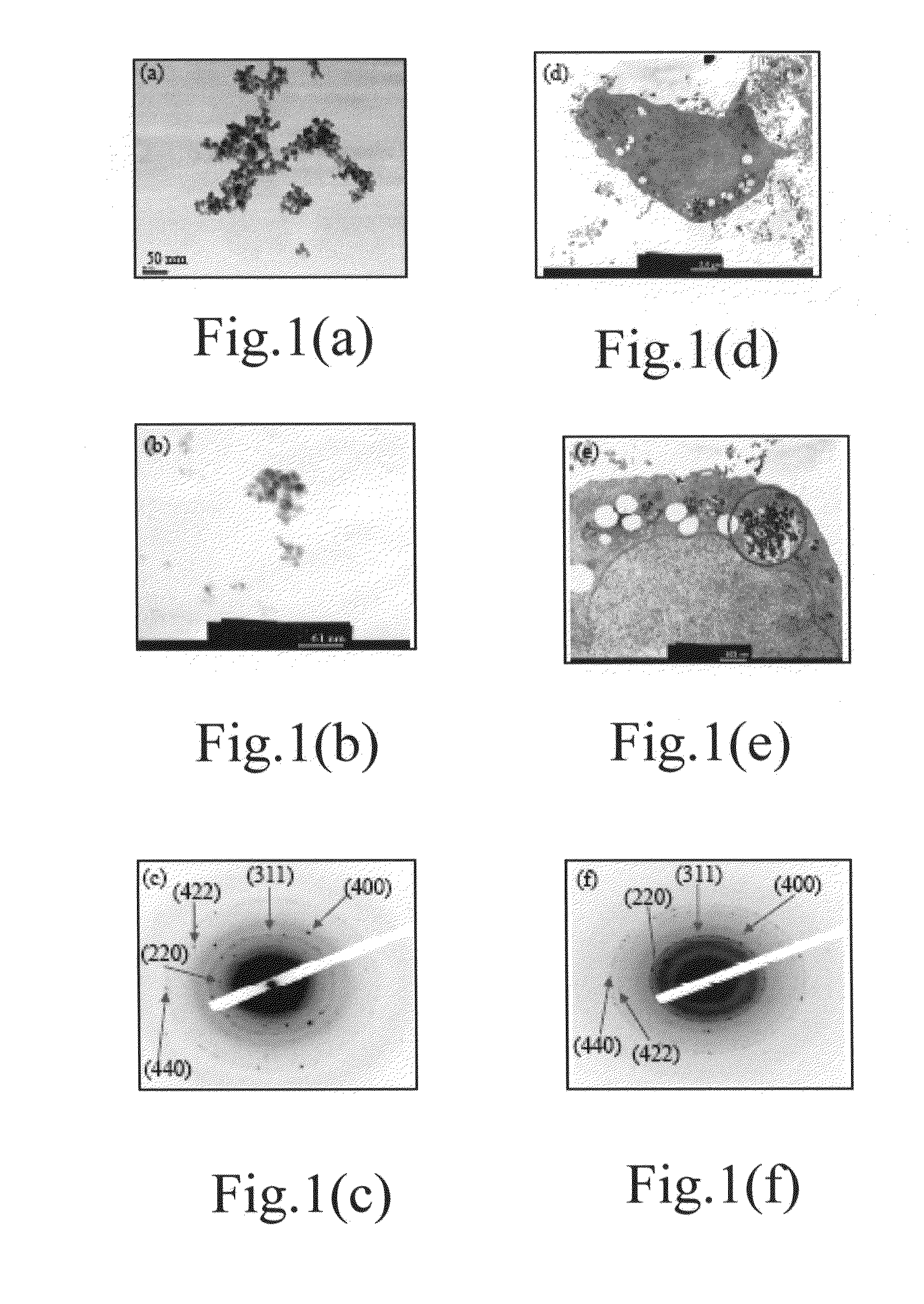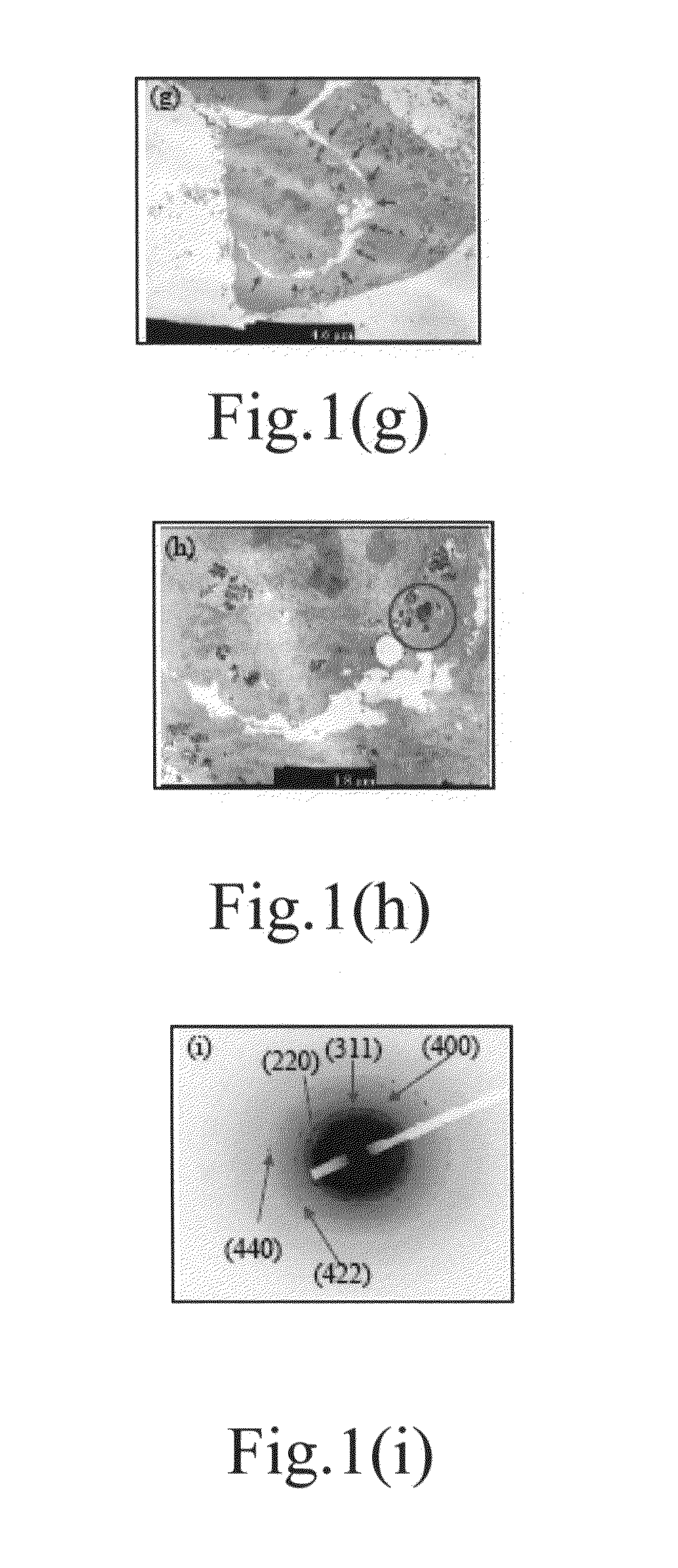Magnetic nanocomposite for inhibiting/treating cancer and method for fabricating the same
a nano-composite and cancer technology, applied in the field of magnetic nano-composites for inhibiting/treating cancer, can solve the problem of limited release rate of medicine, achieve the effects of facilitating gradual release of medicine, preventing from rapid decomposition of medicine, and fast fabrication
- Summary
- Abstract
- Description
- Claims
- Application Information
AI Technical Summary
Benefits of technology
Problems solved by technology
Method used
Image
Examples
embodiment i
The Fabrication and Analysis of the Magnetic Nanoparticle of the Present Invention
In this embodiment, a co-deposition method is used to fabricate the magnetic nanoparticles (MNPs) of ferric ferrous oxide (Fe3O4). Firstly, 0.7 g (4.32×10−3 mole) FeCl3, 1.07 g (6.48×10−3 mole) FeCl2.4H2O and 400 ml of double distilled water are added into a three-necked bottle and agitated for 5 minutes at an ambient temperature to completely dissolve FeCl3 and FeCl2.4H2O, Next, 20 mL of 0.864N NaOH aqueous solution is added into the three-necked bottle, and the temperature of the solution is raised to 80° C., whereby MNPs are formed. Next, the reaction products are cooled down and vibrated with an ultrasonic vibrator to uniformly disperse the magnetic nanoparticles in the aqueous solution. Next, the mixture solution is poured into a separating funnel, and a strong magnet is placed outside the funnel to attract the magnetic nanoparticles with the solution flowing away from the bottom of the funnel, wh...
embodiment ii
The Fabrication and Analysis of the Basal Body of the Magnetic Nanocomposite of the Present Invention
Firstly, 10 ml of MNPs aqueous solution having a concentration of 6.4 mg / mL and an SPAnNa (poly[aniline-co-sodium N-(1-one-butyric acid) aniline]) aqueous solution having a concentration of 4.9 mg / mL are mixed uniformly. The mixed solution is vibrated with an ultrasonic vibrator, and a 0.5M HCl solution is dropped into the mixed solution. In an acidic environment, SPAnNa aggregates and envelops magnetic nanoparticles to form basal bodies of the magnetic nanocomposite with the core being MNPs and the shell being SPAnH. Next, the basal bodies of the magnetic nanocomposite are separated from the solution and then dispersed in double distilled water. Thus are formed the SPAnH / MNPs basal bodies of the magnetic nanocomposite. From the TEM photograph in FIG. 1(b), it is observed that the SPAnH / MNPs basal bodies have a particle size of about 18 nm. Curve (b) and Curve (c) in FIG. 2 are respe...
embodiments iii-ix
The Fabrication and Analysis of the Magnetic Nanocomposite of the Present Invention
PUM
| Property | Measurement | Unit |
|---|---|---|
| diameter | aaaaa | aaaaa |
| temperature | aaaaa | aaaaa |
| temperature | aaaaa | aaaaa |
Abstract
Description
Claims
Application Information
 Login to View More
Login to View More - R&D
- Intellectual Property
- Life Sciences
- Materials
- Tech Scout
- Unparalleled Data Quality
- Higher Quality Content
- 60% Fewer Hallucinations
Browse by: Latest US Patents, China's latest patents, Technical Efficacy Thesaurus, Application Domain, Technology Topic, Popular Technical Reports.
© 2025 PatSnap. All rights reserved.Legal|Privacy policy|Modern Slavery Act Transparency Statement|Sitemap|About US| Contact US: help@patsnap.com



